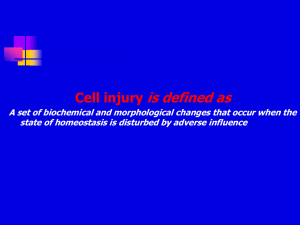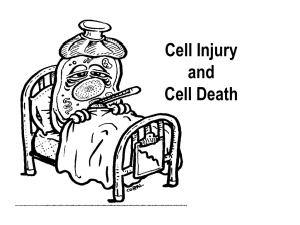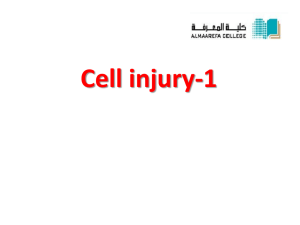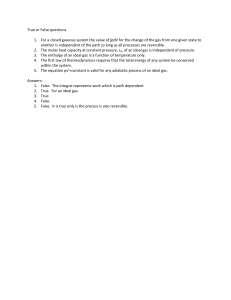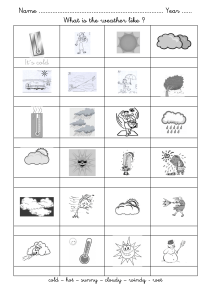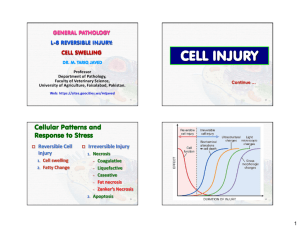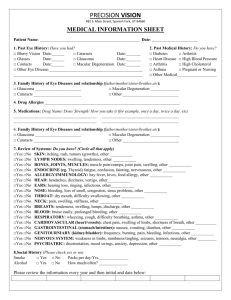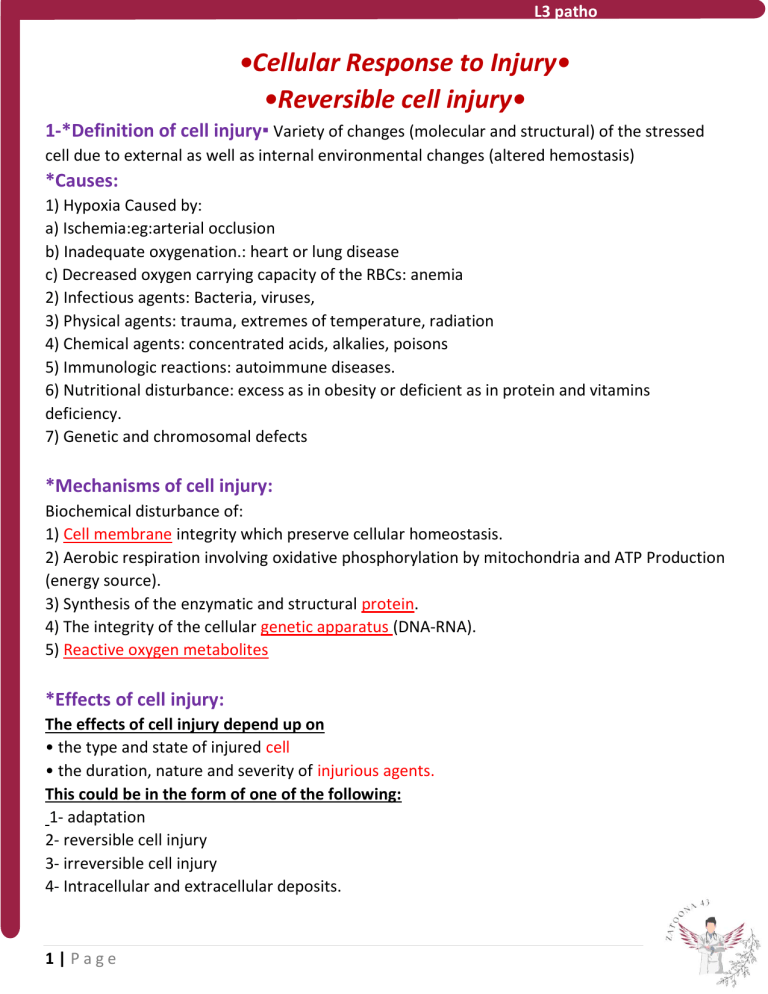
L3 patho •Cellular Response to Injury• •Reversible cell injury• 1-*Definition of cell injury▪ Variety of changes (molecular and structural) of the stressed cell due to external as well as internal environmental changes (altered hemostasis) *Causes: 1) Hypoxia Caused by: a) Ischemia:eg:arterial occlusion b) Inadequate oxygenation.: heart or lung disease c) Decreased oxygen carrying capacity of the RBCs: anemia 2) Infectious agents: Bacteria, viruses, 3) Physical agents: trauma, extremes of temperature, radiation 4) Chemical agents: concentrated acids, alkalies, poisons 5) Immunologic reactions: autoimmune diseases. 6) Nutritional disturbance: excess as in obesity or deficient as in protein and vitamins deficiency. 7) Genetic and chromosomal defects *Mechanisms of cell injury: Biochemical disturbance of: 1) Cell membrane integrity which preserve cellular homeostasis. 2) Aerobic respiration involving oxidative phosphorylation by mitochondria and ATP Production (energy source). 3) Synthesis of the enzymatic and structural protein. 4) The integrity of the cellular genetic apparatus (DNA-RNA). 5) Reactive oxygen metabolites *Effects of cell injury: The effects of cell injury depend up on • the type and state of injured cell • the duration, nature and severity of injurious agents. This could be in the form of one of the following: 1- adaptation 2- reversible cell injury 3- irreversible cell injury 4- Intracellular and extracellular deposits. 1|Page L3 patho 2-Reversible cell Injury *Caused by mild injury or injury of short duration * Active parenchymatous cells with higher rate of metabolism suffer more than supporting stromal cells.(liver-kidney-heart) *includes: a) Acute cellular swelling (cloudy swelling and hydropic swelling). b) Fatty change. *A-cloudy swelling & hydropic degeneration *Definition: Reversible cell injury characterized by mild (in cloudy) and excess (in hydropic) intracellular water accumulation. *Cause: mild injury or injury of short duration *pathogenesis Injurious agents mainly hypoxia -----> inhibit oxidative phosphorylation and ATP to formation by the mitochondria - ----> Loss of ATP, which is the energy source causes: 1) Failure of the active cell membrane transport (sodium pump). Sodium enters the cell (followed by water entry) and potassium diffuses out of the cell. 2) Anaerobic ATP synthesis occurs and catabolites as lactate and inorganic phosphates accumulate increasing the intracellular osmotic load resulting in water entry. *Pathological Features -Gross picture The affected organ appears: ▪ swollen, ▪ soft ▪bloodless and pale due to compression of the capillaries by the swollen cells. ▪outer surface: smooth with rounded borders. ▪ cut surface: appears cloudy (less glistening), opaque and bulges outwards . - Microscopic picture CLOUDY SWELLING ▪1-The cells are swollen. ▪2- The cytoplasm is granular. ▪3-The nucleus is normal. ▪4- The capillaries between the cells are compressed. HYDROPIC DEGENERATION ▪The cells are swollen. ▪ The cytoplasm is pale and Show multiple Vacuoles ▪The nucleus is normal. 2|Page L3 patho *Cell swelling due to accumulation of water Hydropic change kidney. The tubular epithelial cells are distended with cytoplasmic vacuoles while the interstitial vasculature is compressed. The nuclei of affected tubules are pale Example B- FATTY CHANGE/ degeneration ▪ Definition: Reversible cell injury characterized by accumulation of natural fat in parenchymatous cells. ▪ causes: ▪1) Hypoxia. ▪2) Viral infections e.g: HCV ▪3) Bacterial toxins of acute and chronic infections. ▪ 4) Chemical agents as alcohol, phosphorous and carbon tetrachloride. 3|Page Cloudy swelling L3 patho Pathological Feature Gross Picture The affected organ is: • enlarged and soft • outer surface: smooth, pale yellow rounded borders. • The capsule is tense. • The cut surface bulges and is greasy to touch. •Fatty liver 4|Page Microscopic Picture •The cells appear swollen and Show multiple tiny cytoplasmic vacuoles (microvesicular steatosis) •The fat globules fuse together forming a big globule (macro vesicular steatosis) that pushes and flattens the nucleus against the cell membrane giving the cell a signet ring appearance •The swollen cells compress the intercellular capillaries. .•Steatosis= fatty degeneration L3 patho *Injury(Altered homeostasis) Write the scientific term▪ Reversible morphological changes affecting cells in the absence of adaptation or in case of exceeded cell adaptation ▪ I am a reversible cell change characterized by abnormal intracellular accumulation of fat Q: ▪Can you explain the mechanism of abnormal intracellular accumulation of water? 5|Page
